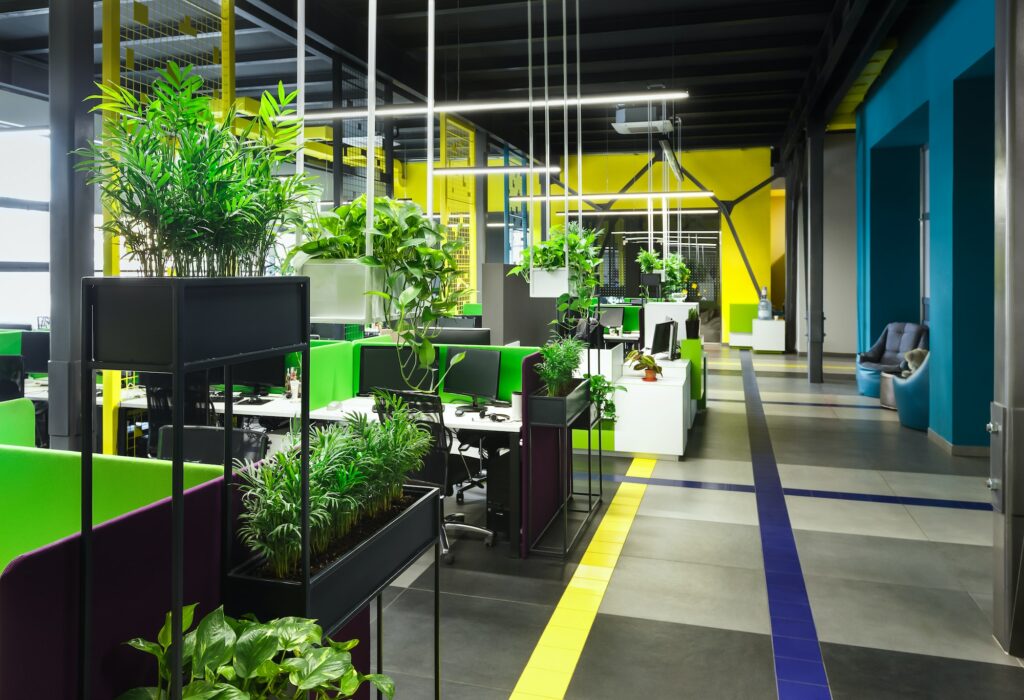Office furniture plays a significant role in creating a functional and aesthetically pleasing workspace. As workplace design continues to evolve, new trends in office furniture emerge, reflecting changing work dynamics, employee preferences, and technological advancements. Staying updated with the latest trends can help you create a modern and inspiring office environment. This article will explore the hottest trends in office furniture and identify what’s in and out of today’s workplace.
Ergonomics Takes the Lead:
There has been a growing focus on ergonomics in office furniture design in recent years. Ergonomic furniture promotes employee well-being, productivity, and comfort. Adjustable standing desks, ergonomic chairs with lumbar support, and sit-stand workstations are gaining popularity. The trend is moving towards furniture that allows employees to customize their workspace to suit their needs and preferences.
Collaborative and Flexible Workspaces:
Collaborative and flexible workspaces gradually replace the traditional cubicle-centric office layout. Open-plan layouts with versatile furniture configurations are on the rise. Furniture that facilitates teamwork and interaction, such as modular seating arrangements, shared workstations, and flexible meeting areas, are in high demand. These setups encourage collaboration, creativity, and a sense of community among employees.
Biophilic Design and Natural Elements:
Bringing nature into the office has become a prominent trend in furniture design. The biophilic design integrates natural elements into the workspace, such as plants, raw materials, and ample natural light. Furniture incorporating biophilic elements, such as wooden desks, living green walls, and natural fabric upholstery, create a calming and visually appealing environment. This trend aims to enhance employee well-being, productivity, and connection to nature.
Technology Integration:
As technology continues to shape the modern workplace, office furniture adapts to accommodate the integration of devices and connectivity. Furniture with built-in charging ports, wireless charging capabilities, and cable management systems is gaining popularity. Desks with integrated power outlets and USB ports, monitor mounts with adjustable positions, and smart office furniture that syncs with devices are in high demand. These features enhance productivity and promote a clutter-free workspace.
Dynamic and Agile Seating:

Dynamic and agile seating options are replacing static seating arrangements. Flexible seating solutions, such as stools, ottomans, and modular seating units, allow employees to choose their preferred working positions throughout the day. These versatile seating options promote movement, comfort, and collaboration. Standing-height desks and balance ball chairs are also becoming popular alternatives to traditional seating.
Versatile Storage Solutions:
Traditional bulky filing cabinets and storage units give way to sleek and versatile storage solutions. Furniture with integrated storage, such as desks with built-in drawers or shelves, multifunctional cabinets, and modular storage systems, are on-trend. These space-saving solutions keep the office organized while adding a modern, streamlined look to the workspace.
Wellness-Oriented Furniture:

Employee well-being and mental health are gaining attention in office design, leading to the emergence of wellness-oriented furniture. This includes ergonomic chairs with features like built-in massage capabilities or adjustable tension settings. Standing desks with built-in treadmills or bikes allow employees to incorporate exercise into their workday. Soft pods or meditation spaces with comfortable seating and calming elements are also becoming popular additions to the office.
Outdated Cubicles and Formal Conference Rooms:
Traditional cubicles and formal conference rooms are losing popularity as companies seek to create more open and flexible work environments. Communal areas, breakout zones, and adaptable meeting spaces replace closed-off spaces. Employees embrace informal meeting areas with comfortable seating options like couches or lounge chairs and technology-enabled huddle rooms for quick and efficient discussions.
Conclusion:
The world of office furniture is constantly evolving to meet modern workplaces’ changing needs and preferences. From ergonomic designs to flexible and collaborative workspaces, biophilic elements, technology integration, and versatile storage solutions, the trends in office furniture Melbourne reflect a shift towards employee well-being, productivity, and adaptability. By staying informed about the latest trends, you can create a contemporary and inspiring office environment that aligns with the evolving nature of work and fosters creativity, collaboration, and employee satisfaction.
